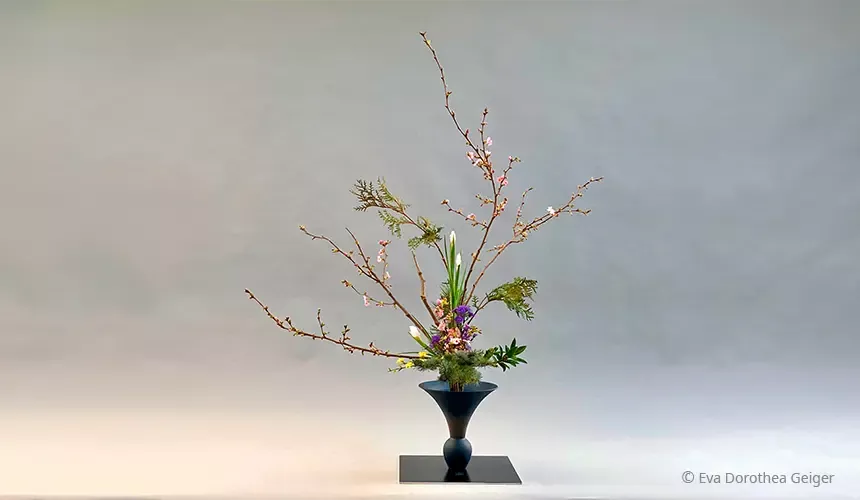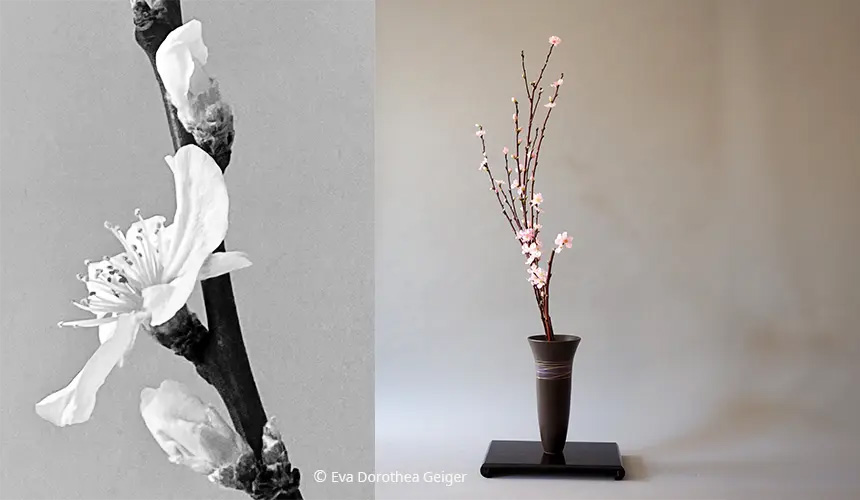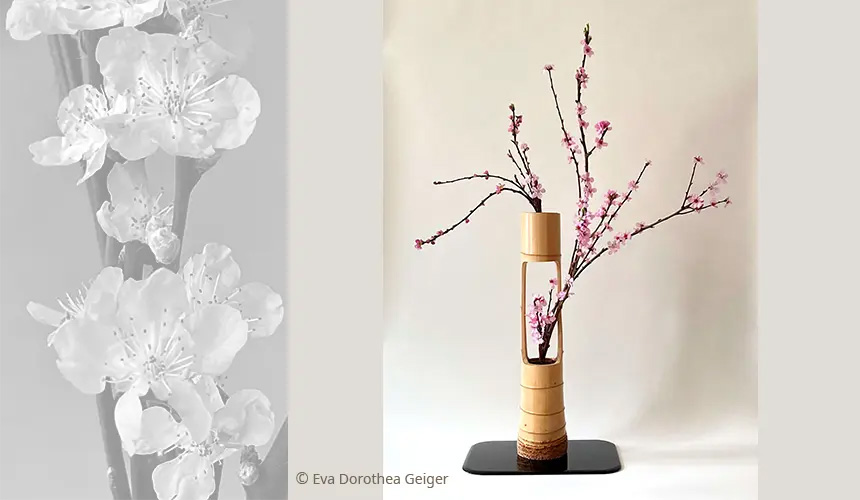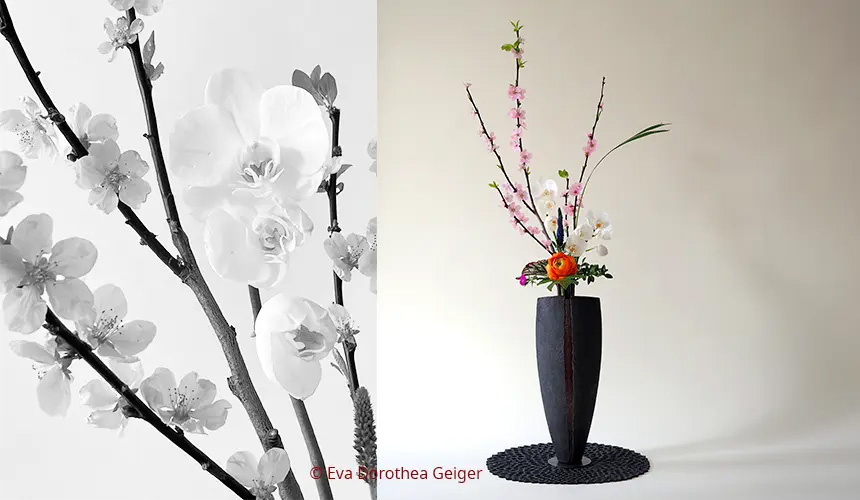
The Japanese cherry / Prunus 染井吉野, also known as Sakura 桜, is one of the most well-known and revered flowers in Japan and has a deep cultural and symbolic meaning.
The cherry blossom heralds the warm part of the year and is not only a sign of spring, but also a symbol of new beginnings, beauty and transience. A symbol of feminine beauty in Japan, its short flowering period of just one to two weeks reminds people to appreciate the beauty of the moment and enjoy life.

This concept, known as mono no aware (物の哀れ), is deeply rooted in Japanese culture and reflects an appreciation for the transience of life. Mono no Aware teaches us that the beauty of things is dependent on impermanence. Cherry trees flaunting their blossoms, hastily fading and soon to be carried away by the wind and rain. It is the unique pleasure of a finite beauty, a mixture of joy, sadness and acceptance, in short: mono no aware - the sensitivity of the moment or the fleetingness of life.

The history of sakura in Japan dates back to the 8th century, when cherry trees were introduced from China. Since then, they have become an integral part of the Japanese landscape and culture. The annual Hanami festival, where people gather to picnic under the blossoming cherry trees and admire the beauty of the blossoms, is a highlight of spring in Japan. In 1992, the Japan Cherry Blossom Association declared March 27 Cherry Blossom Day.

The sakura is also an important symbol in art, literature and poetry. Its delicate petals have inspired artists and poets for centuries and have served as a motif for numerous paintings, poems and haiku. In the traditional Japanese art of ikebana, or flower arranging, cherry blossoms are often used to symbolize the transience of life and capture the beauty of the moment.
The Japanese cherry is a fascinating symbol that expresses the Japanese people's deep connection with nature, their appreciation of the beauty of the moment and their recognition of the transience of life.